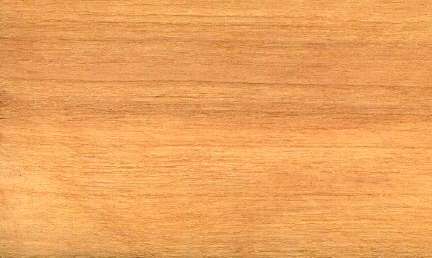
Black Cottonwood (Populus trichocarpa)
Family: Salicaeae
Common names: Balm cottonwood, Black cottonwood, Cottonwood, Poplar, Western balsam poplar
Distributed in: United States (North America)
Distribution overview: Distributed from latitude 62 degrees N in south Alaska, southward to southern California and eastward in the mountains to extreme south-weatern Alberta and Montana. It is also reported to grow locally in south-western North Dakota and northern Baja California. Black cottonwood often occurs in pure stands, and in association with willows, Red alder, Oregon ash, Bigleaf maple, Douglas-fir, Western red cedar, Western hemlock, Sitka spruce, Grand fir, Birch, Cherry, and hawthorn. It prefers moist to wet soils of valleys, mainly on stream banks and flood plains. It may also be found on upland slopes. The largest concentration of Black cottonwood tress is found in the satae of Washington, where it is ranked third in total volume behind Red alder (Anus rubra) and Bigleaf maple (Acer macrophylla). also grown in Great Britain, where it is considered as the fastest growing balsam tree.
Common uses: Baskets, Boxes and crates, Brooders, Casks, Chairs, Chests, Concealed parts (Furniture), Core Stock, Decorative veneer, Desks, Dining-room furniture, Dowell pins, Dowells, Drawer sides, Drum sticks, Excelsior, Figured veneer, Fine furniture, Floor lamps, Food containers, Furniture , Furniture components, Furniture squares or stock, Hatracks, Jewelry box, Kitchen cabinets, Living-room suites, Musical instruments , Office furniture, Organ pipes, Packing cases, Pallets, Piano keys, Pianos , Plain veneer, Poultry coops, Pulp/Paper products, Pulpwood, Radio - stereo - TV cabinets, Rustic furniture, Veneer
Environment profile: Widespread, abundant, and globally secure
Tree size: Tree height is 20-30 m
Black cottonwood is reported to reach maturity as early as 60 years and will survive for at least 200 years.
Colors: the heart isOccasionally dark streaks , Redand the sapwoodSapwood blends into heartwood , Whitish.The grain isStraight, the textureUniformand the lusterHigh
Natural durability: Susceptible to insect attack, Very little natural resistance
Odor: No distinctive taste
Silica Content: Siliceous
Kiln Schedules: T8-F4 (8/4)
Drying Defects: Expect moderate degrade from water pockets., Moderate collapse and honeycombing
Ease of Drying: Moderately Difficult to Difficult
Blunting Effect: Slight
Boring: Variable results of size and smoothness
Carving: Fairly Easy to Very Easy
Cutting Resistance: Gum-Up
Gluing: Excellent gluing properties
Mortising: Fairly Easy to Very Easy
Moulding: Fairly Easy to Very Easy
Movement in Service: Fairly Easy to Very Easy
Nailing: Excellent resistance to splitting in nailing operations , Holds satisfactorily
Planing: Very poor machining properties
Resistance to Impregnation: Resistant sapwood
Response to hand tools: Responds Readily
Routing recessing: Fairly Easy to Very Easy
Sanding: Poor results
Steam bending: Poor
Screwing: Good screwing properties, Screws hold well.; Turning: Fairly Easy to Very Easy
Painting: Satisfactory
Black cottonwood is generally painted instead of clear-coating or staining when finishing is required;
- Numerical data Metric
- Numerical data English
- Strength properties
- References
 |
 |
 |
 |
| Item |
Green |
Dry |
Metric |
| Specific Gravity |
0,29 |
0,32 |
|
| Density |
|
|
kg/m3 |
| Bending Strength |
337 |
585 |
kg/cm2 |
| Crushing Strength |
11 |
20 |
kg/cm2 |
| Hardness |
|
155 |
kg |
| Impact Strength |
50 |
55 |
cm |
| Shearing Strength |
|
71 |
kg/cm2 |
| Stiffness |
74 |
87 |
1000 kg/cm2 |
| Tangential Shrinkage |
8 |
|
% |
| Radial Shrinkage |
4 |
|
% |
| Weight |
|
400 |
kg/m3 |
| Maximum Load |
0,35 |
0,49 |
cm-kg/cm3 |
| Toughness |
|
|
cm-kg |
| Static Bending |
|
|
kg/cm2 |
|
 |  |  |  | | Item | Green | Dry | English | | Bending Strength | 4802 | 8330 | psi | | Crushing Strength | 157 | 294 | psi | | Hardness | | 343 | lbs | | Impact Strength | 20 | 22 | inches | | Maximum Crushing Strength | 2156 | 4410 | psi | | Shearing Strength | | 1019 | psi | | Stiffness | 1058 | 1245 | 1000 psi | | Work to Maximum Load | 5 | 7 | inch-lbs/in3 | | Specific Gravity | 0.29 | 0.32 | | | Weight | | 25 | lbs/ft3 | | Radial Shrinkage | 4 | | % | | Tangential Shrinkage | 8 | | % | | Volumetric Shrinkage | 12 | | % | |
Toughness-Hammer drop (Impact Strength) = medium
Modulus of Elasticity (stiffness) = medium
Low resistance to denting and marring
Hardness (side grain) = soft
Compression strength (parallel to grain) = low
Bending strength (MOR) = low
Boone, R.S., C.J. Kozlik, P.J. Bois and E.M. Wengert. 1988. Dry Kiln Schedules for Commercial Woods: Temperate and Tropical. United States Department of Agriculture, Forest Service, Forest Products Laboratory, General Technical Report FPL-GTR-57, Madison, Wisconsin.Laidlaw, W.B.R.1960. Guide to British Hardwoods.Published by Leonard Hill [Books] Limited, 9 Eden Street, N.W.1, London.Little, E.L.1980.The Audobon Society Field Guide to North American Trees - Western Region.Published by Arthur A. Knopf, New York.Niemiec, S.S., G.A. Ahrens, S. Willits, and D.E. Hibbs. March, 1995. Hardwoods of the Pacific Northwest. Oregon State University, College of Forestry,Research Contribution 8, Forest Research Laboratory, Department of Forest Products, Corvallis, Oregon.Panshin, A.J. and C. deZeeuw. 1980. Textbook of Wood Technology, 4th Edition. McGraw-Hill Series in Forest Resources. McGraw-Hill Book Company, New York.USDA. 1987. Wood Handbook - Wood as an Engineering Material, Forest Service, Agriculture Handbook No. 72, Forest Products Laboratory, Madison, Wisconsin.USDA. 1988. Dry Kiln Operators Manual, Preliminary Copy. Forest Service, Forest Products Laboratory, Madison, Wisconsin.Western Wood Products Association.19__.Woods of the Western USA.Published and distributed by the Western Wood Products Association, Yeon Building, 522 S.W. Fifth Avenue, Portland, Oregon.
|








